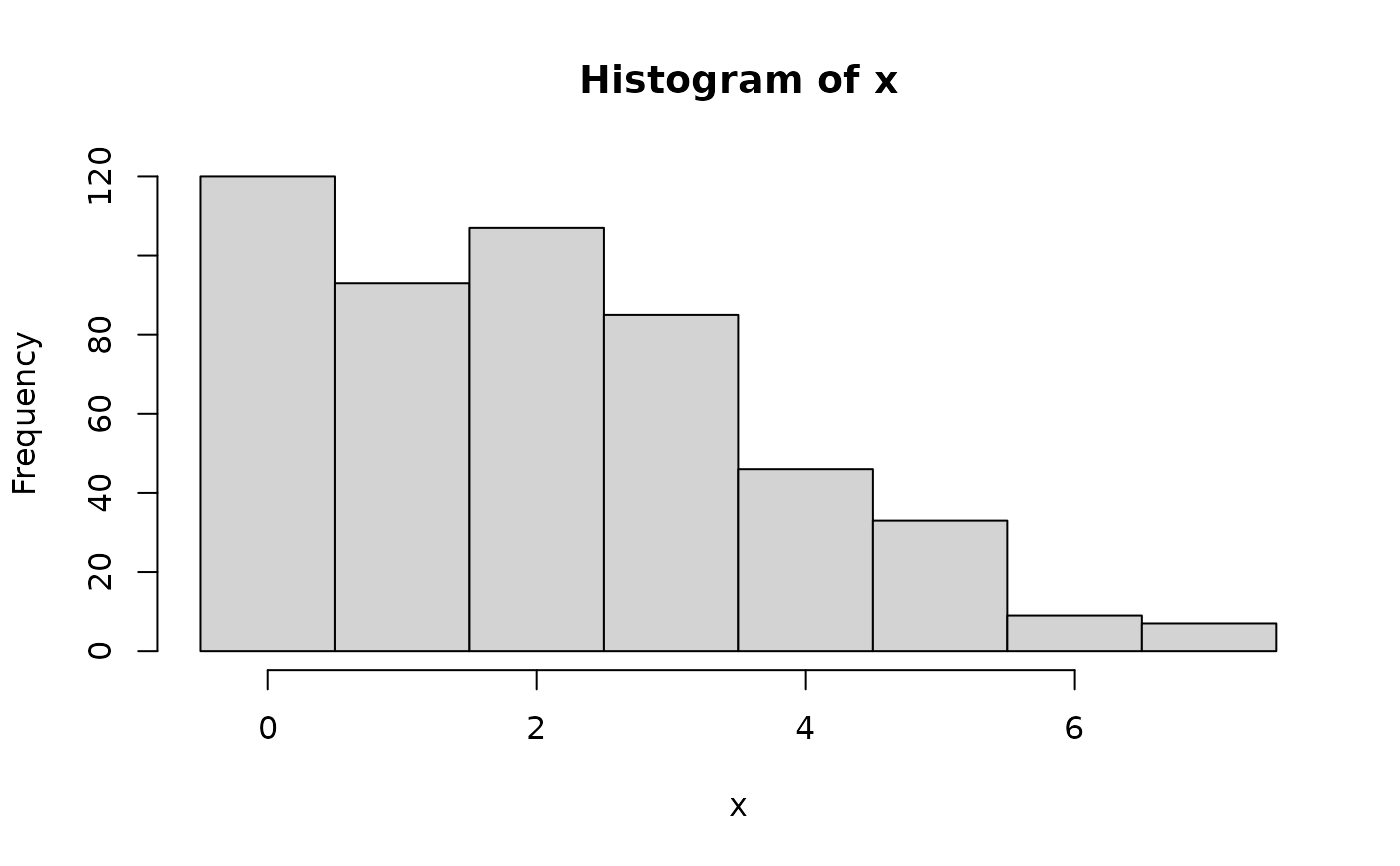Hurdle Poisson distributions are frequently used to model counts with many zero observations.
Details
We recommend reading this documentation on https://alexpghayes.github.io/distributions3/, where the math will render with additional detail.
In the following, let \(X\) be a hurdle Poisson random variable with parameter
lambda = \(\lambda\).
Support: \(\{0, 1, 2, 3, ...\}\)
Mean: $$ \lambda \cdot \frac{\pi}{1 - e^{-\lambda}} $$
Variance: \(m \cdot (\lambda + 1 - m)\), where \(m\) is the mean above.
Probability mass function (p.m.f.): \(P(X = 0) = 1 - \pi\) and for \(k > 0\)
$$ P(X = k) = \pi \cdot \frac{f(k; \lambda)}{1 - f(0; \lambda)} $$
where \(f(k; \lambda)\) is the p.m.f. of the Poisson
distribution.
Cumulative distribution function (c.d.f.): \(P(X \le 0) = 1 - \pi\) and for \(k > 0\)
$$ P(X \le k) = 1 - \pi + \pi \cdot \frac{F(k; \lambda) - F(0; \lambda)}{1 - F(0; \lambda)} $$
where \(F(k; \lambda)\) is the c.d.f. of the Poisson distribution.
Moment generating function (m.g.f.):
Omitted for now.
See also
Other discrete distributions:
Bernoulli(),
Binomial(),
Categorical(),
Geometric(),
HurdleNegativeBinomial(),
HyperGeometric(),
Multinomial(),
NegativeBinomial(),
Poisson(),
PoissonBinomial(),
ZINegativeBinomial(),
ZIPoisson(),
ZTNegativeBinomial(),
ZTPoisson()
Examples
## set up a hurdle Poisson distribution
X <- HurdlePoisson(lambda = 2.5, pi = 0.75)
X
#> [1] "HurdlePoisson(lambda = 2.5, pi = 0.75)"
## standard functions
pdf(X, 0:8)
#> [1] 0.250000000 0.167672793 0.209590992 0.174659160 0.109161975 0.054580987
#> [7] 0.022742078 0.008122171 0.002538178
cdf(X, 0:8)
#> [1] 0.2500000 0.4176728 0.6272638 0.8019229 0.9110849 0.9656659 0.9884080
#> [8] 0.9965302 0.9990683
quantile(X, seq(0, 1, by = 0.25))
#> [1] 0 0 2 3 Inf
## cdf() and quantile() are inverses for each other
quantile(X, cdf(X, 3))
#> [1] 3
## density visualization
plot(0:8, pdf(X, 0:8), type = "h", lwd = 2)
 ## corresponding sample with histogram of empirical frequencies
set.seed(0)
x <- random(X, 500)
hist(x, breaks = -1:max(x) + 0.5)
## corresponding sample with histogram of empirical frequencies
set.seed(0)
x <- random(X, 500)
hist(x, breaks = -1:max(x) + 0.5)
